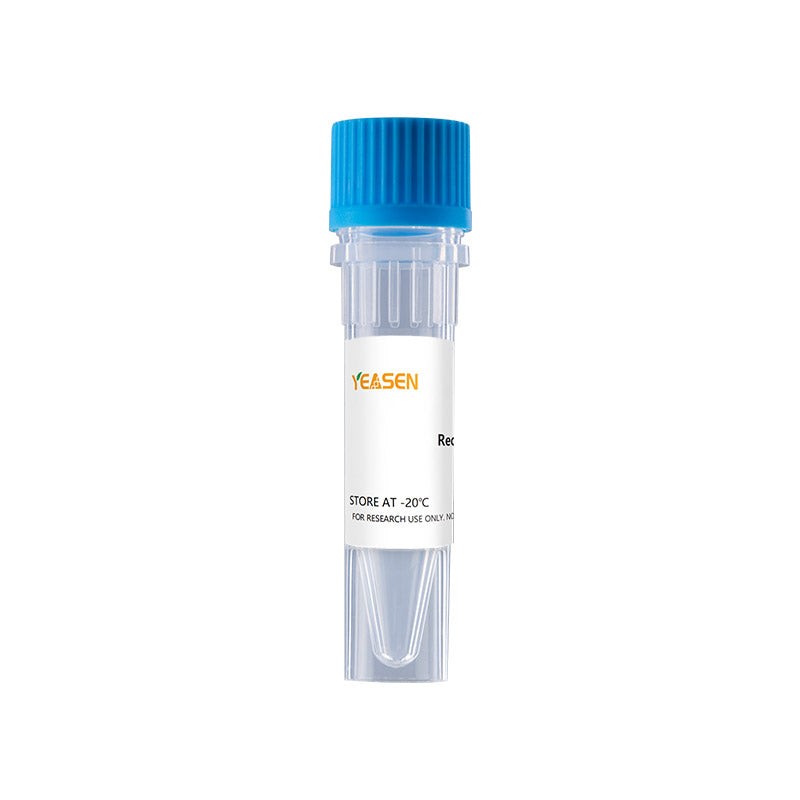Description
Interleukin-7 (IL-7) is required for the development and survival of T cells and plays a critical role in modulating T-cell homeostasis.IL-7 is a limiting resource under normal conditions, but it accumulates during lymphopaenia, leading to increased T cell proliferation.Human IL-7 shares approximately 60-63% aa sequence identity with mouse, rat, canine and feline IL-7, and 72-76% with equine, bovine, ovine, porcine, feline and canine IL-7. IL-7 as an immunotherapy agent has been examinedin many human clinical trials for various malignancies and during HIV infection. Furthermore, IL-7 induces the arming of effector functions and enhances the sensitivity of MAIT cells.
Product Properties
|
Synonyms |
Interleukin-7, IL-7, LP-1, pre-B cell factor |
|
Accession |
|
|
GeneID |
|
|
Source |
E.coli-derived rat IL-7 protein, Asp26-Ile154. |
|
Molecular Weight |
Approximately 14.9 kDa |
|
AA Sequence |
DCHIKDKDGK AFGSVLMISI NQLDKMTGTD SDCPNNEPNF FKKHLCDDTK EAAFLNRAAR KLRQFLKMNI SEEFNDHLLR VSDGTQTLVN CTSKEEKTIK EQKKNDPCFL KRLLREIKTC WNKILKGSI |
|
Tag |
None |
|
Physical Appearance |
Sterile Filtered White lyophilized (freeze-dried) powder. |
|
Purity |
> 95% by SDS-PAGE and HPLC analyses. |
|
Biological Activity |
The ED50 as determined by a cell proliferation assay using murine 2E8 cells is less than 2.0 ng/mL, corresponding to a specific activity of > 5.0 × 105 IU/mg. Fully biologically active when compared to standard. |
|
Endotoxin |
< 1.0 EU per 1μg of the protein by the LAL method. |
|
Formulation |
Lyophilized from a 0.2 µm filtered concentrated solution in PBS, pH 7.4. |
|
Reconstitution |
We recommend that this vial be briefly centrifuged prior to opening to bring the contents to the bottom. Reconstitute in sterile distilled water or aqueous buffer containing 0.1% BSA to a concentration of 0.1-1.0 mg/mL. Stock solutions should be apportioned into working aliquots and stored at ≤ -20℃. Further dilutions should be made in appropriate buffered solutions. |
Shipping and Storage
The products are shipped with ice pack and can be stored at -20℃ to -80℃ for 1 year.
Recommend to aliquot the protein into smaller quantities when first used and avoid repeated freeze-thaw cycles.
Cautions
1. Avoid repeated freeze-thaw cycles.
2. For your safety and health, please wear lab coats and disposable gloves for operation.
3. For research use only!
Payment & Security
Your payment information is processed securely. We do not store credit card details nor have access to your credit card information.
Inquiry
You may also like
FAQ
The product is for research purposes only and is not intended for therapeutic or diagnostic use in humans or animals. Products and content are protected by patents, trademarks, and copyrights owned by Yeasen Biotechnology. Trademark symbols indicate the country of origin, not necessarily registration in all regions.
Certain applications may require additional third-party intellectual property rights.
Yeasen is dedicated to ethical science, believing our research should address critical questions while ensuring safety and ethical standards.

